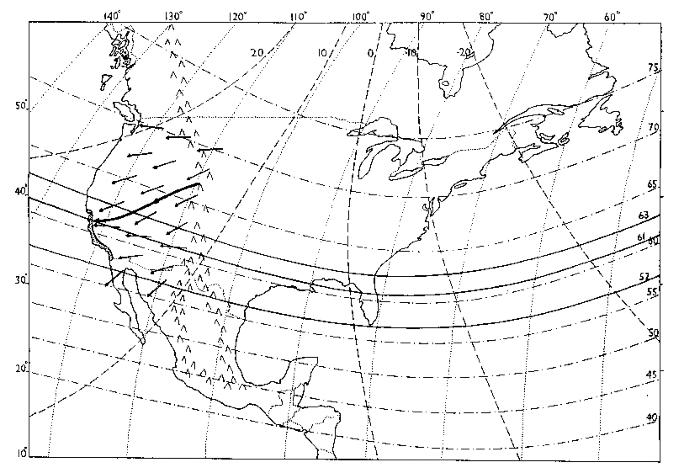Compass Bearings Hypothesis
Suns' Azimuth Hypothesis
Expansion-Contraction Hypothesis
Never Go Back Hypothesis
A Theoretical
Kiepenheuer, Schmidt-Koenig, and Gibo, Magnetoclinic, Magnetic Latitude, Late Summer and
Fall Migration Route for Western Population of Monarch Butterflies

Drawing by Diane Scott
Labels
- Joined arrows indicate one possible K/S-K/G Magnetoclinic, Magnetic Latitude, late summer and fall migration route for the western population.
- Individual Arrows located on and north of the 65° isocline of magnetic inclination, and on the 57° isocline, indicate local K/S-K magnetoclinic routes.
- Arrows centred on the 61° isocline of magnetic inclination, and the two arrows located on the Mexico/United States border, indicate local K/S-K/G Magnetoclinic, Magnetic Latitude routes.
- All other lines, graphics, and numbers along margins are the same as in drawing of the Kiepenheuer and Schmidt-Koenig Magnetoclinic late summer and fall migration route.
Notes
- Monarch butterflies in the western population that migrate are assumed to be attempting to carry out the eastern migration pattern in the wrong part of the continent. Because of the properties of the magnetic field in the region, the migrants end up trapped against the Pacific Ocean until their preferred direction reverses in the spring.
- Reversing K/S-K/G route in the spring directs the butterflies inland, particularly migrants that start from the middle and southern region of the overwintering zone.